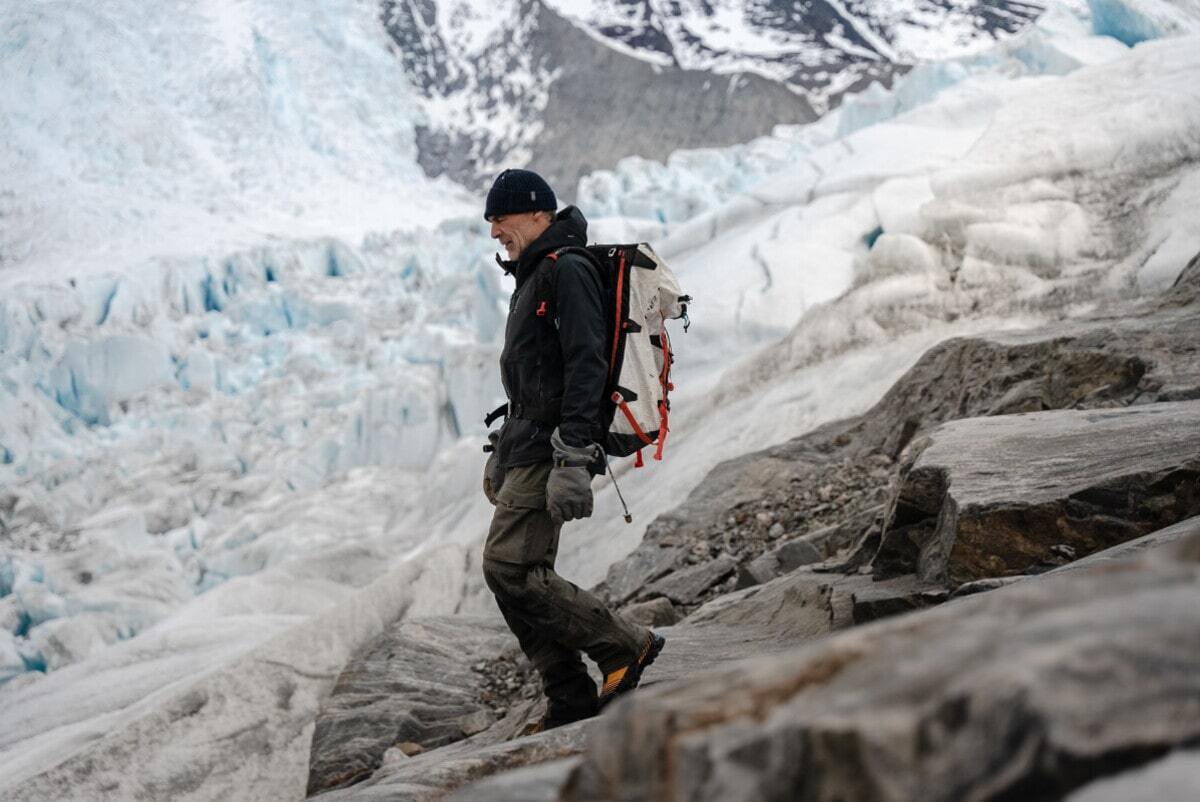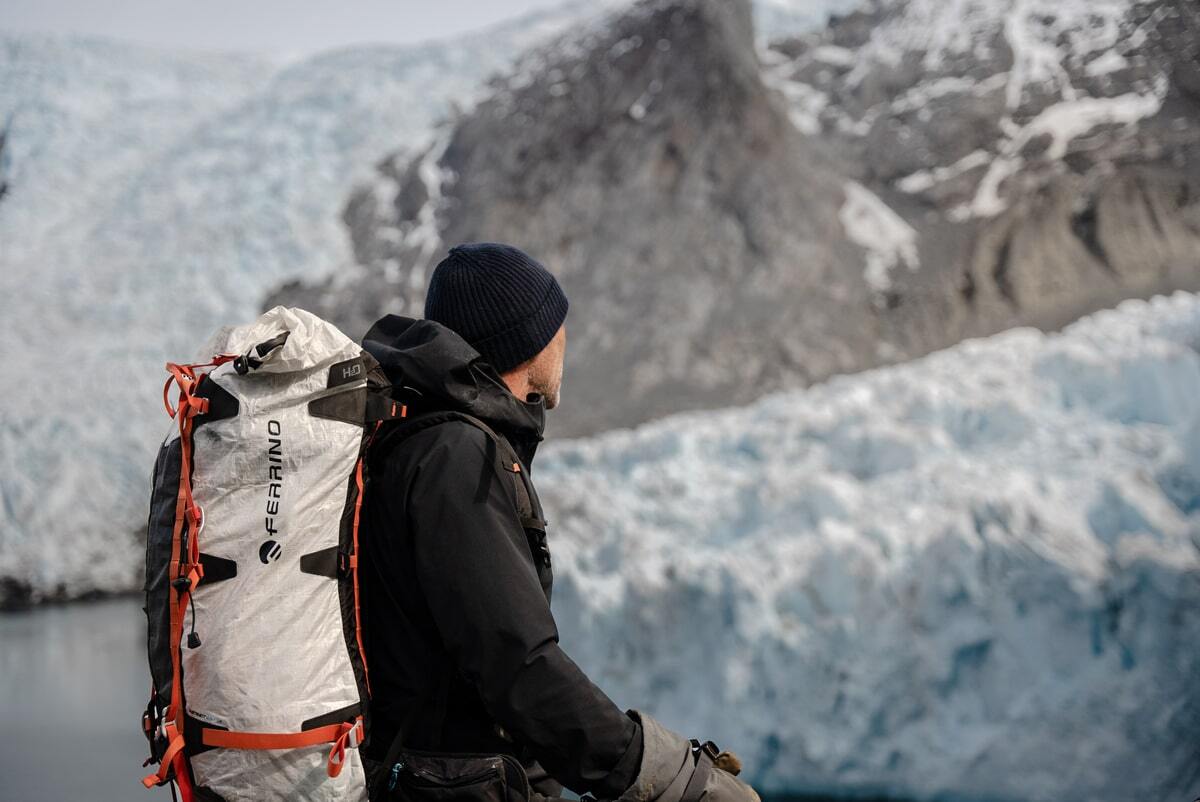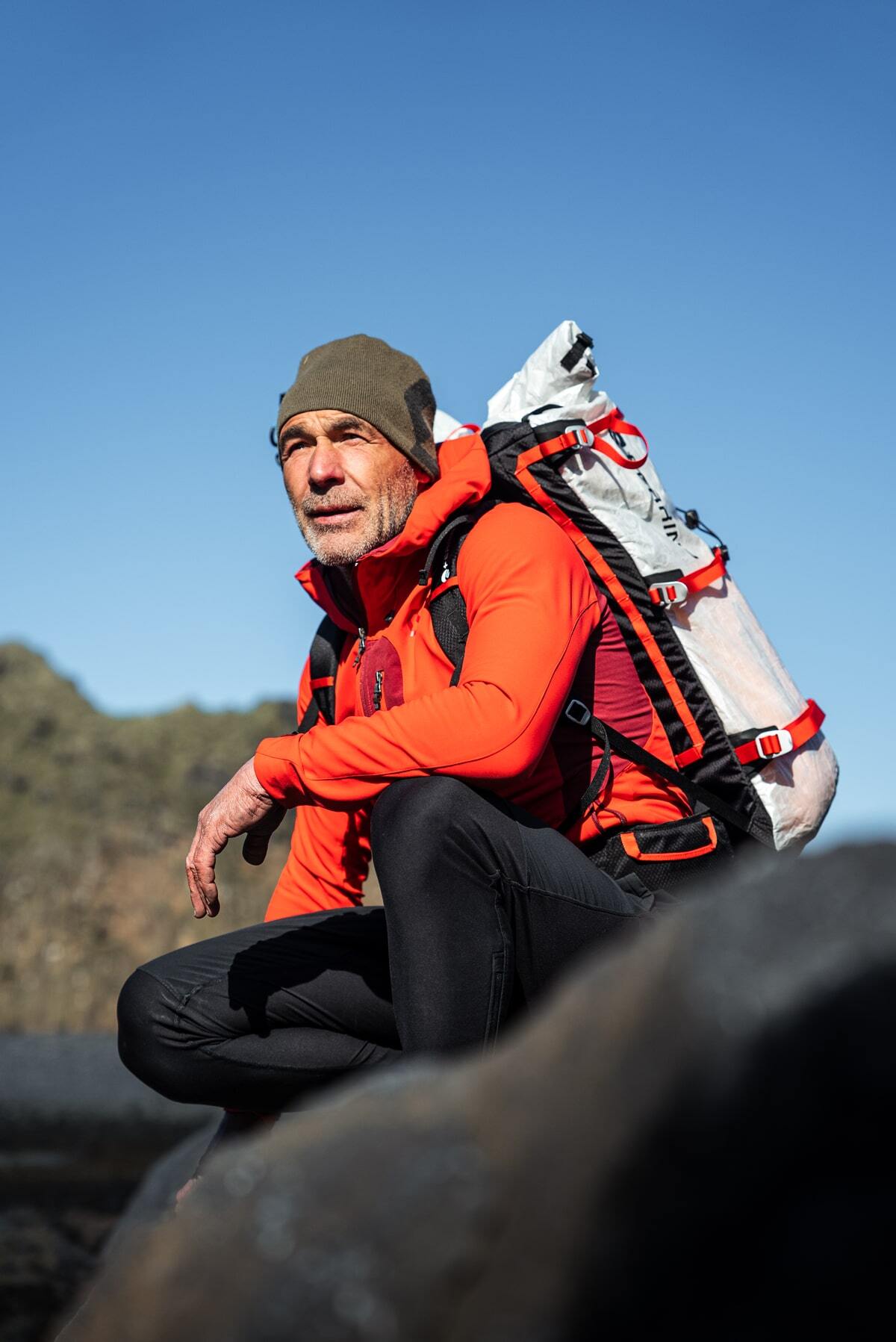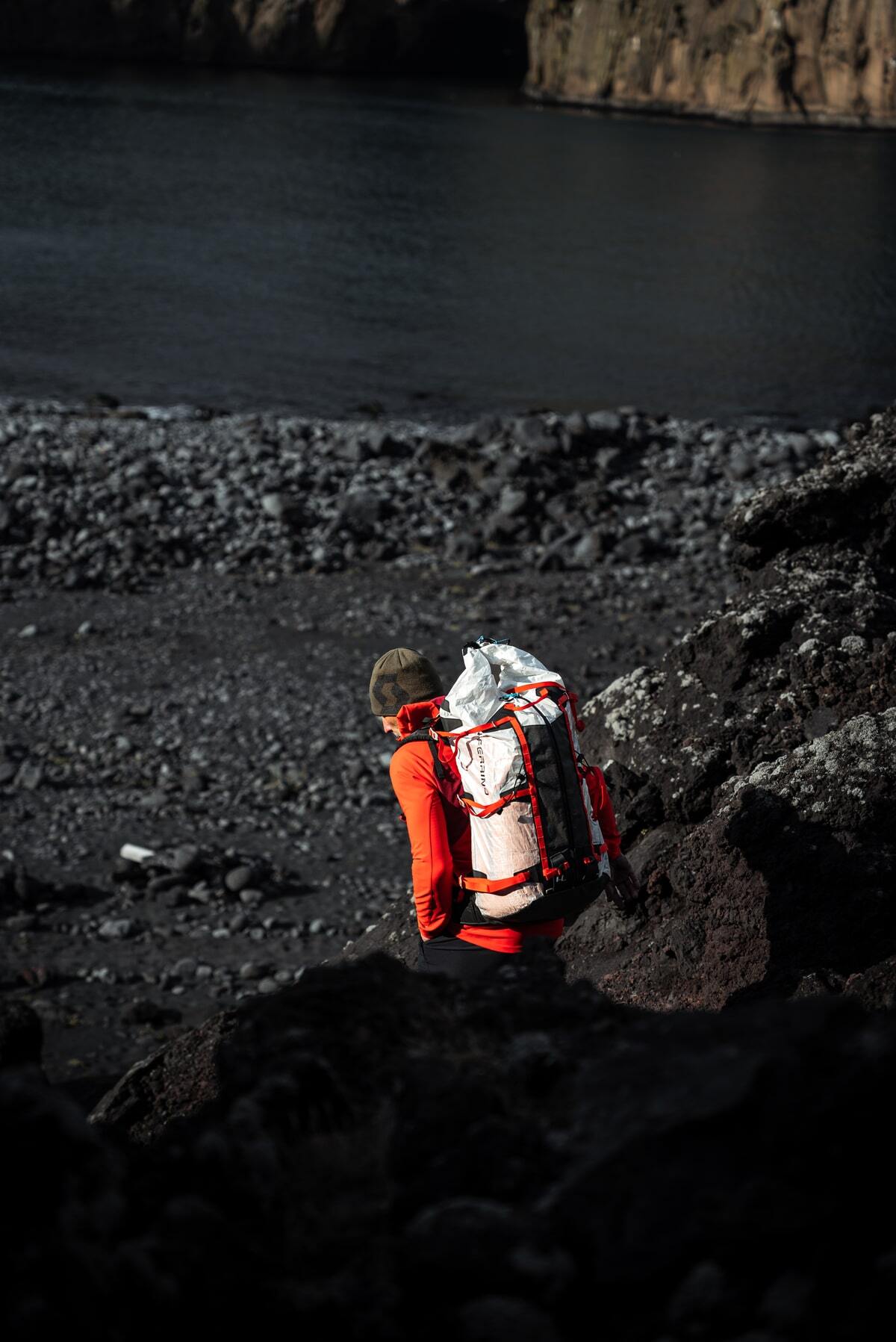
“Climate change in Greenland is shocking, but it is inspiring to see how local people are learning to adapt. We have a lot to learn from these experiences.”
More than a year has passed since the launch of the great What's Left project by Mike Horn, a true living legend in the world of exploration and historic ambassador of Ferrino.
Aboard his sailboat Pangaea, Mike has set sail on a long journey that, over the course of four years, will take him back to the places that have been the destination of his great adventures, to discover, precisely, what remains, what has changed and how nature and human populations are adapting to the climate changes underway on a global scale.
The journey began in the summer of 2023 and, in the months that have passed, Horn and his team have written the first chapter of this new story between the sea and the glaciers of Greenland. The time has come to hear from him directly about the experiences and emotions lived.

Mike, you decided to stop for many months in Greenland, spending the whole winter there. It seems that what you are looking for is not just a trip, but a way to live and inhabit these wild places. Is this impression correct? What led you to make this choice?
“What’s Left is about diving deep into nature, living it, breathing it, and truly becoming part of it. Spending the winter in Greenland wasn’t just about surviving the cold; it was about embracing it. I wanted to experience these wild places as they are, to understand the land and its people from the inside. It’s no longer just about the thrill of travel; it’s about finding a way to coexist with these incredible environments and seeing what we can learn from these experiences and apply them to our own lives.”
One of the goals of the What's Left project is to verify what has changed over the years in the places that have been the scene of your great adventures. In these first months of expedition, have you already been able to perceive these differences? What has struck you the most, not only in the environment but also in the lifestyle of the people who live in Greenland?
“The changes are undeniable. Glaciers are retreating and the climate is unpredictable. Places I remembered as solid ice are now traversed by water. It is shocking and sad to see this firsthand. The people here are adapting in extraordinary ways. They are combining their traditions with new methods to cope with these changes. Their resilience and creativity in the face of such drastic environmental changes is truly inspiring.”

Spending multiple seasons in Greenland, have you also been able to perceive the effects of climate change in those lands?
“Absolutely. The ice is thinner, the winters aren’t as cold, and the summers are warmer. It’s a real wake-up call to see these changes up close. It’s affecting everything: the landscape, the wildlife, and the way local communities live. It’s a clear reminder that climate change is happening right now, right before our eyes, and it’s hitting places like Greenland hard.”
More and more often we hear that the world has become small and there is nothing left to explore. Living in a frontier land like Greenland, have you also had this impression or do you think there is still room for exploration and great adventures? Have you experienced new situations or challenges that you did not expect to face?
“There’s still so much out there! Greenland, with its rugged terrain and challenging conditions, is proof that there’s still so much to explore. Every day brings a new challenge, something unexpected. Whether it’s navigating unfamiliar ice fields or dealing with unpredictable weather, there’s always something to keep you on your toes. The adventure is far from over; it’s just taking on new forms.”

What will be the next stop on your journey?
“Next up is the Amazon! It feels like coming full circle, because that’s where my exploration career really took off when I swam the entire length of the Amazon River, from source to mouth, in 1996. But before we go there, Pangaea will stop in Europe for a much-needed overhaul after a tough winter in Greenland’s ice cap. The Amazon is crucial not only because of its personal significance to me, but also because of the rapid changes it’s undergoing. It’s a place of incredible biodiversity and beauty, but it’s facing serious threats from deforestation and climate change. This journey is about seeing those changes firsthand, understanding their impacts, and sharing that story with the world. There’s so much more to learn and explore in the Amazon, and it’s vital that we shed light on its current state.”
